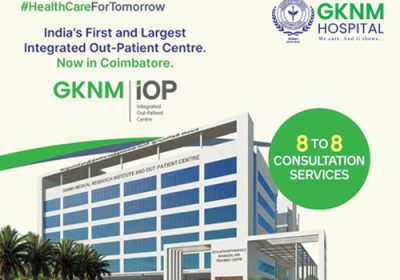What is MIPS Healthcare and How Does It Impact Medical Professionals?
Description
quality care and efficiency are paramount. The Merit-based Incentive Payment System (MIPS) is a critical component designed to address these goals. This comprehensive guide delves into what MIPS Reporting Services is, how it functions, and its significant impact on medical professionals.
Understanding MIPS Healthcare
What is MIPS?
The Merit-based Incentive Payment System (MIPS) is a program implemented by the Centers for Medicare & Medicaid Services (CMS) to streamline various existing quality programs into one cohesive system. It is part of the broader Quality Payment Program (QPP), introduced under the Medicare Access and CHIP Reauthorization Act of 2015 (MACRA). The primary objective of MIPS is to promote better outcomes for patients, reduce the cost of healthcare, and ensure that healthcare providers are reimbursed based on the quality and efficiency of care they deliver.
Key Components of MIPS
MIPS assesses healthcare providers across four performance categories:
- Quality: This category evaluates the quality of care provided based on various measures relevant to the provider’s specialty. It accounts for 45% of the total MIPS score.
- Promoting Interoperability (PI): This focuses on the meaningful use of certified electronic health record (EHR) technology to improve patient care. It comprises 25% of the MIPS score.
- Improvement Activities (IA): This category assesses participation in activities that improve clinical practice, such as enhancing care coordination and patient engagement. It makes up 15% of the MIPS score.
- Cost: This category measures the cost of care provided by clinicians and assesses the efficiency of their services. It contributes 15% to the overall MIPS score.
MIPS Eligibility and Reporting
Not all healthcare providers are required to participate in MIPS. Eligibility is based on several factors, including the provider’s Medicare billing amount, the number of Medicare patients treated, and their clinician type. Providers can report their MIPS data individually or as part of a group practice. Reporting can be done through various mechanisms, including EHR, qualified clinical data registries (QCDRs), and the CMS Web Interface.
Impact of MIPS on Medical Professionals
Financial Implications
One of the most significant impacts of MIPS on medical professionals is financial. MIPS scores directly affect Medicare payment adjustments. Providers who achieve high MIPS scores can receive positive payment adjustments, while those with lower scores may face penalties. These adjustments can significantly influence a provider’s revenue, making performance in MIPS a critical financial consideration.
Quality of Care
MIPS places a strong emphasis on the quality of care, encouraging providers to adopt best practices and engage in continuous improvement activities. By linking payment adjustments to quality metrics, MIPS incentivizes providers to enhance patient outcomes, reduce errors, and promote preventive care measures. This focus on quality aims to create a more effective and patient-centered healthcare system In Mips Measures 2024.
Administrative Burden
While MIPS aims to improve healthcare delivery, it also introduces administrative challenges. Providers must invest time and resources in collecting and reporting performance data, which can be a significant burden, particularly for smaller practices. Ensuring accurate and timely reporting requires robust systems and processes, as well as a thorough understanding of MIPS requirements.
Technology and Interoperability
The Promoting Interoperability (PI) category of MIPS highlights the importance of using certified EHR technology. Providers must demonstrate meaningful use of EHRs to exchange health information securely and efficiently. This push towards interoperability aims to improve care coordination, reduce duplication of services, and enhance patient engagement. However, integrating and maintaining EHR systems can be costly and technically challenging for many providers.
Patient Engagement and Care Coordination
MIPS encourages providers to engage patients more actively in their care. Improvement Activities (IA) that focus on patient engagement, care coordination, and patient safety are essential components of MIPS. By fostering better communication and collaboration between providers and patients, MIPS aims to enhance the overall patient experience and improve health outcomes.
Professional Development and Continuous Improvement
Participation in MIPS requires healthcare professionals to stay updated with the latest clinical guidelines, quality measures, and best practices. This emphasis on continuous learning and improvement helps ensure that providers are delivering the highest standard of care. Engaging in professional development activities and implementing improvement initiatives can lead to better performance in MIPS and, consequently, more favorable payment adjustments.
Strategies for Success in MIPS
Thorough Understanding of MIPS Requirements
To succeed in MIPS, healthcare providers must have a comprehensive understanding of the program’s requirements and performance categories. Staying informed about changes and updates to MIPS is crucial for maintaining compliance and optimizing performance.
Effective Use of Technology
Investing in robust EHR systems and other health IT tools is essential for meeting MIPS requirements, particularly in the Promoting Interoperability category. Providers should ensure that their technology is capable of capturing and reporting necessary data accurately and securely.
Focus on Quality Improvement
Continuous quality improvement should be a central focus for providers participating in MIPS. Implementing evidence-based practices, monitoring performance metrics, and engaging in improvement activities can lead to better patient outcomes and higher MIPS scores.
Efficient Data Management
Accurate and efficient data management is critical for successful MIPS reporting. Providers should establish streamlined processes for data collection, validation, and submission. Utilizing qualified clinical data registries (QCDRs) and other reporting mechanisms can help ensure accurate and timely reporting.
Patient-Centered Care
Engaging patients in their care and focusing on patient-centered practices can positively impact MIPS performance. Providers should prioritize activities that enhance patient engagement, care coordination, and patient safety, as these are key components of the Improvement Activities category.
Conclusion
The Merit-based Incentive Payment System (MIPS) represents a significant shift towards value-based care in the U.S. healthcare system. By linking payment adjustments to the quality and efficiency of care, MIPS incentivizes providers to adopt best practices, engage in continuous improvement, and focus on patient outcomes. While MIPS introduces administrative and technological challenges, it also presents opportunities for healthcare professionals to enhance their practice and achieve better financial and clinical results.








Leave feedback about this
You must be logged in to post a review.